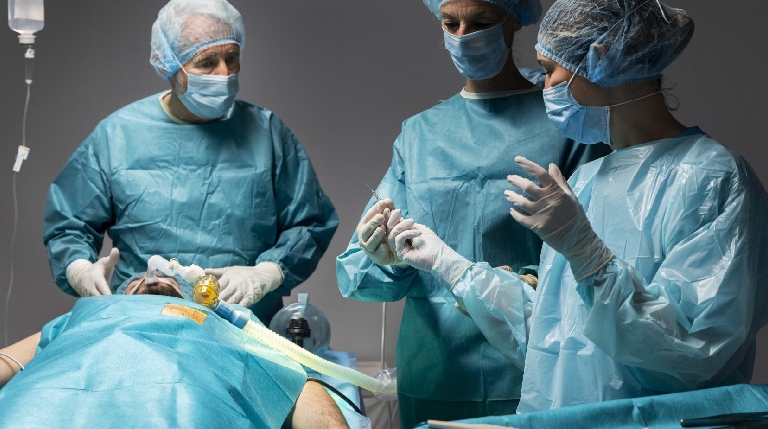Total Hip Replacement (THR) surgery, a significant medical procedure, is often the last resort for those suffering from severe hip pain and mobility issues. Whether due to arthritis, injury, or other joint diseases, THR can significantly improve quality of life. However, understanding the intricacies of this surgery is crucial for those considering it. Here are seven vital aspects you should know about Total Hip Replacement Surgery.
1. Understanding When THR is Necessary
Identifying the Need:
THR is typically recommended when hip pain and stiffness significantly impair your daily activities and when other treatments have failed to provide relief.
Impact on Quality of Life:
Severe arthritis, hip fractures, and other degenerative hip diseases are common reasons leading to the need for THR.
2. The Surgical Procedure Explained
What Happens During Surgery:
THR involves replacing the damaged hip joint with an artificial one (prosthesis). This includes the replacement of both the socket (acetabulum) and the ball (femoral head).
Types of Prostheses:
Various types of hip prostheses are made from materials like metal, plastic, or ceramic. Your surgeon will decide the most suitable type based on age, activity level, and bone quality.
3. Preparing for Surgery
Pre-Surgical Assessments:
Preparation includes thorough health evaluations, including blood tests, X-rays, or MRIs, to ensure you’re fit for surgery.
Lifestyle Adjustments:
Smoking cessation, weight management, and chronic disease control are essential for reducing surgery risks and improving outcomes.
4. Recovery and Rehabilitation
Initial Recovery Phase:
Post-surgery, you can expect to stay in the hospital for a few days. Early mobilisation, often within 24 hours, is encouraged to enhance blood circulation and prevent blood clots.
Role of Rehabilitation:
Rehabilitation, including physical therapy, is crucial for regaining strength and mobility. The total recovery period can vary from person to person.
5. Understanding the Risks and Complications
Potential Risks:
Like any major surgery, THR carries risks such as infections, blood clots, and hip dislocation. Discuss these potential complications with your surgeon.
Long-Term Considerations:
There’s also a risk of wear and tear of the prosthesis over time, which may require revision surgery.
6. The Importance of Postoperative Care
Follow-Up Appointments:
Regular check-ups post-surgery are essential for monitoring your progress and implant condition.
Lifestyle Modifications:
Post-surgery lifestyle changes, such as avoiding high-impact activities, can prolong the life of your hip implant.
7. The Success Rate of THR
High Success Rates:
THR is one of the most successful orthopaedic surgeries, with many patients experiencing significant pain relief and improved mobility.
Long-Term Outcomes:
Most hip replacements are successful for 15-20 years, depending on the patient’s activity level and weight.
In conclusion, Total Hip Replacement Surgery is a life-altering procedure that offers substantial benefits for those suffering from debilitating hip pain. Understanding these key aspects can help you navigate the journey from pre-surgery preparation to postoperative recovery more effectively.Disclaimer: The content of this blog is intended for educational purposes and should not be considered a substitute for professional medical advice. For personalised healthcare recommendations, please consult a specialist physician. The results of treatments vary from person to person.

